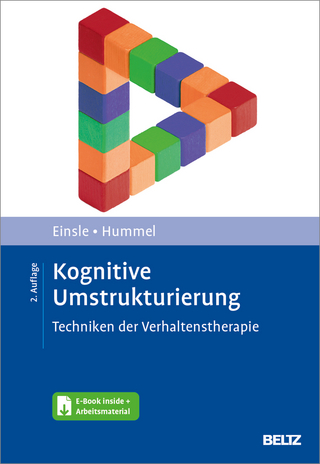
Supersizing the Mind
Oxford University Press Inc (Verlag)
978-0-19-533321-3 (ISBN)
Studies of mind, thought and reason have tended to marginalize the role of bodily form, real-world action, and environmental backdrop. In recent years, both in philosophy and cognitive science, this tendency has been identified and, increasingly, resisted. The result is a plethora of work on what has become known as embodied, situated, distributed, and even 'extended' cognition. Work in this new, loosely knit field depicts thought and reason as in some way inextricably tied to the details of our gross bodily form, our habits of action and intervention, and the enabling web of social, cultural, and technological scaffolding in which we live, move, learn, and think. But exactly what kind of link is at issue? And what difference might such a link or links make to our best philosophical, psychological, and computational models of thought and reason? These are among the large unsolved problems in this increasingly popular field.
Drawing upon recent work in psychology, linguistics, neuroscience, artificial intelligence, robotics, human-computer systems, and beyond, Supersizing the Mind offers both a tour of the emerging landscape, and a sustained argument in favor of one approach to the key issues. That approach combines the use of representational, computational, and information-theoretic tools with an appreciation of the importance of context, timing, biomechanics, and dynamics. More controversially, it depicts some coalitions of biological and non-biological resources as the extended cognitive circuitry of individual minds.
With a substantial foreword by David Chalmers, Supersizing the Mind is essential reading for all those interested in embodied cognition, the extended mind, and the likely shape of twenty-first century cognitive scientific explanation.
Andy Clark is Professor of Philosophy in the School of Philosophy, Psychology and Language Sciences, at Edinburgh University in Scotland. He is the author of several books including Being There: Putting Brain, Body and World Together Again (1997) and Natural-Born Cyborgs: Minds, Technologies and The Future Of Human Intelligence (OUP, 2003). His research interests include robotics and artificial life, the cognitive role of human-built structures, specialization and interactive dynamics in neural systems, and the interplay between language, thought and action.
Forward: By David Chalmers / Acknowledgements / Introduction: BRAINBOUND versus EXTENDED / I: From Embodiment to Cognitive Extension - 1. The Active Body: 1.1 A Walk on the Wild Side; 1.2 Inhabited Interaction; 1.3 Active Sensing; 1.4 Distributed Functional Decomposition; 1.5 Sensing for Coupling; 1.6 Information Self-Structuring; 1.7 Perception, Qualia, and Sensorimotor Expectations; 1.8 Time and Mind; 1.9 Dynamics and (Soft) Computation.; 1.10 Out from the Bedrock; 2. The Negotiable Body: 2.1 Where the Rubber Meets the Road; 2.2 What's in an Interface?; 2.3 New Systemic Wholes; 2.4 Substitutes; 2.5 Incorporation Vs Use; 2.6 Towards Cognitive Extension; 2.7 Three Grades of Embodiment; 3. Material Symbols: 3.1 Language as Scaffolding; 3.2 Augmenting Reality; 3.3 Sculpting Attention; 3.4 Hybrid Thoughts?;3.5 From Translation to Coordination; 3.6 Second-order Cognitive Dynamics; 3.7 Self-made Minds.;4. World, Incorporated: 4.1 Cognitive Niche Construction: A Primer; 4.2 Cognition in the Globe: A Cameo; 4.3 Thinking Space; 4.4 Epistemic Engineers; 4.5 Exploitative Representation and Wide Computation; 4.6 Tetris: The Update; 4.7 The Swirl of Organization; 4.8 Extending the Mind; 4.9 BRAINBOUND versus EXTENDED: The Case So Far.; II. Boundary Disputes - 5. Mind Re-bound?: 5.1 EXTENDED Anxiety; 5.2 Pencil Me In; 5.3 The Odd Coupling; 5.4 Cognitive Candidacy; 5.5 The Mark of the Cognitive?; 5.6 Kinds and Minds; 5.7 Perception and Development; 5.8 Deception and Contested Space; 5.9 Folk Intuition and Cognitive Extension; 5.10 Asymmetry and Lopsideness; 5.11 Similarity vs Complementarity; 5.12 Hippo-World; 6. The Cure for Cognitive Hiccups (HEMC, HEC, HEMC): 6.1 Rupert's Challenge; 6.2 HEC versus HEMC; 6.3 Parity and Cognitive Kinds (Again); 6.4 The Persisting Core; 6.5 Cognitive Impartiality; 6.6 A Brain Teaser; 6.7 Thoughtful Gestures; 6.8 Material Carriers; 6.9 Loops as Mechanisms; 6.10 Anarchic Self-Stimulation; 6.11Autonomous Coupling; 6.12 Why the HEC?; 6.13 The Cure; 7. Rediscovering the Brain: 7.1 Matter into Mind; 7.2.Honey, I Shrunk the Representations; 7.3 Change Spotting: The Sequel; 7.4 Thinking about Thinking: The Brain's Eye View.: 7.5 Born-Again Cartesians?; 7.6 Surrogate Situations; 7.7 Plug Points; 7.8 Brain Control; 7.9 Asymmetry Arguments; 7.10 Extended in a Vat; 7.11 The (Situated) Cognizer's Innards; III: The Limits of Embodiment - 8. Painting, Planning, and Perceiving: 8.1 Enacting Perceptual Experience; 8.2 The Painter and the Perceiver; 8.3 Three Virtues of the Strong Sensorimotor Model; 8.4 A Vice: Sensorimotor (Hyper) Sensitivity; 8.5 What Reaching Teaches; 8.6 (Tweaked)Tele-Assistance; 8.7 Sensorimotor Summarizing; 8.8 Virtual Content, Again; 8.9 Beyond the Sensorimotor Frontier; 9. Disentangling Embodiment: 9.1 Three Threads; 9.2 The Separability Thesis; 9.3 Beyond Flesh-eating Functionalism. ; 9.4 Ada, Adder, and Odder; 9.5 A Tension Revealed; 9.6 What Bodies Are; 9.7 Participant Machinery and Morphological Computation; 9.8 Quantifying Embodiment; 9.9 The Heideggerian Theatre / 10. Conclusions: Mindsized Bites / Appendix: The Extended Mind (Andy Clark and David Chalmers)
| Erscheint lt. Verlag | 6.11.2008 |
|---|---|
| Reihe/Serie | Philosophy of Mind Series |
| Zusatzinfo | 10 halftones, 7 line illustrations |
| Verlagsort | New York |
| Sprache | englisch |
| Maße | 236 x 160 mm |
| Gewicht | 567 g |
| Themenwelt | Geisteswissenschaften ► Philosophie |
| Geisteswissenschaften ► Psychologie ► Allgemeine Psychologie | |
| Geisteswissenschaften ► Psychologie ► Verhaltenstherapie | |
| Naturwissenschaften ► Biologie ► Humanbiologie | |
| Naturwissenschaften ► Biologie ► Zoologie | |
| ISBN-10 | 0-19-533321-7 / 0195333217 |
| ISBN-13 | 978-0-19-533321-3 / 9780195333213 |
| Zustand | Neuware |
| Informationen gemäß Produktsicherheitsverordnung (GPSR) | |
| Haben Sie eine Frage zum Produkt? |
aus dem Bereich


